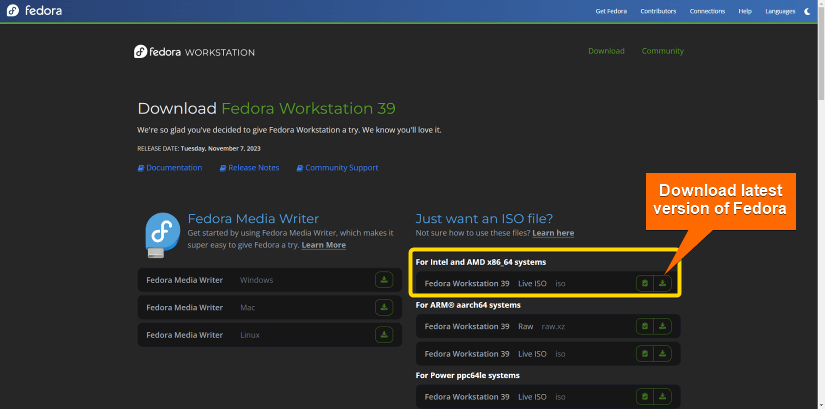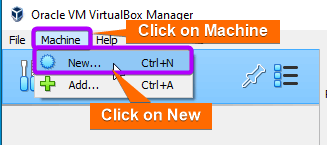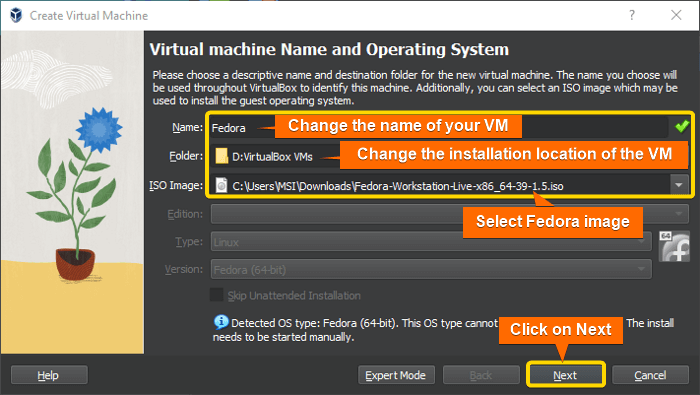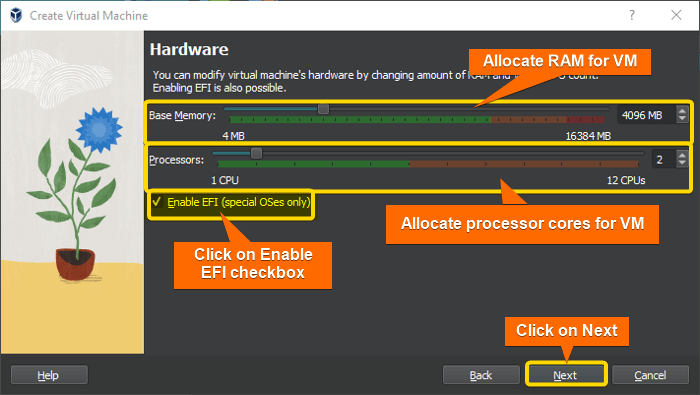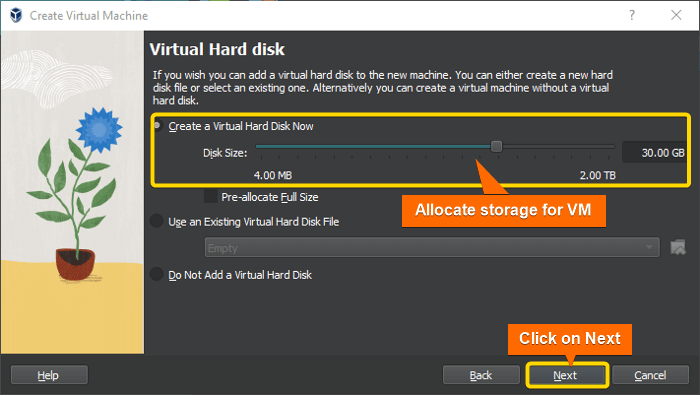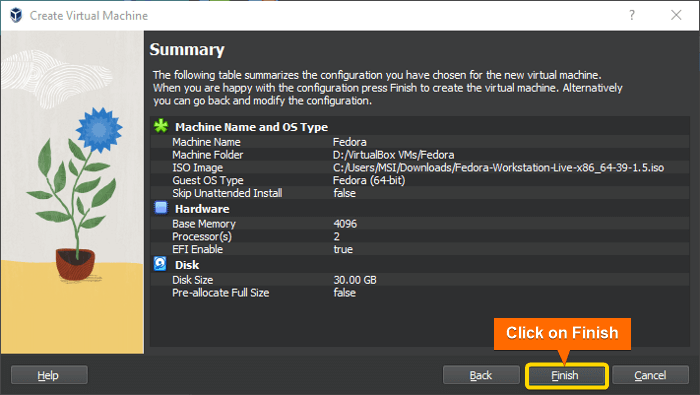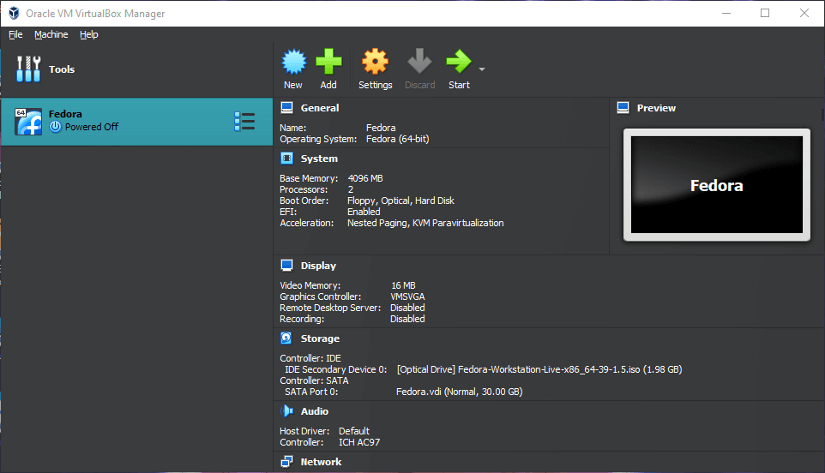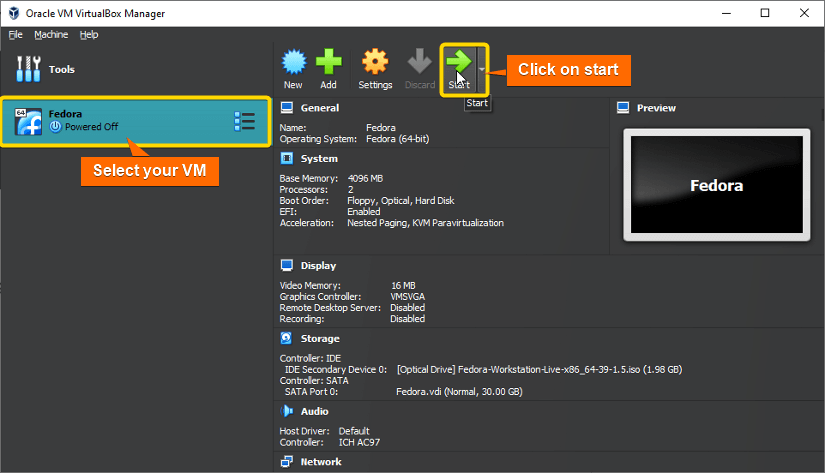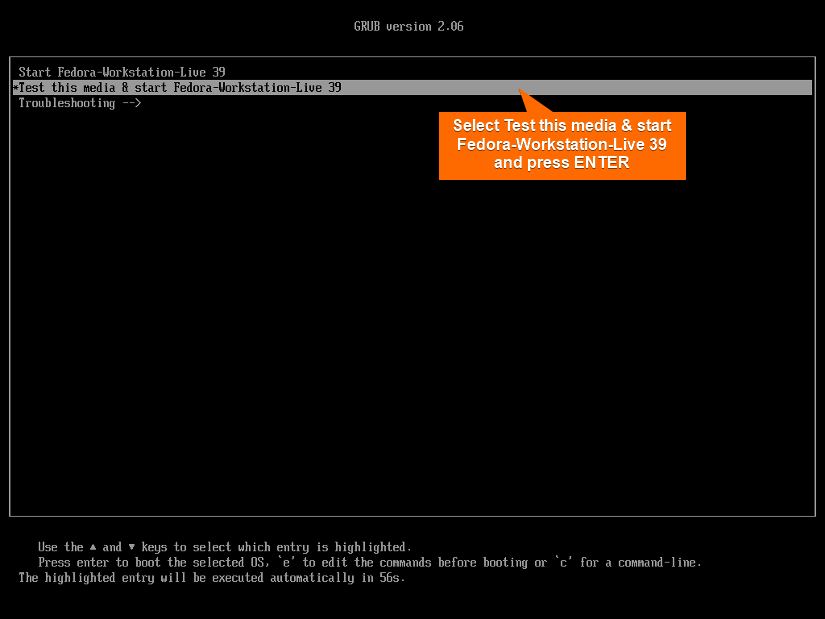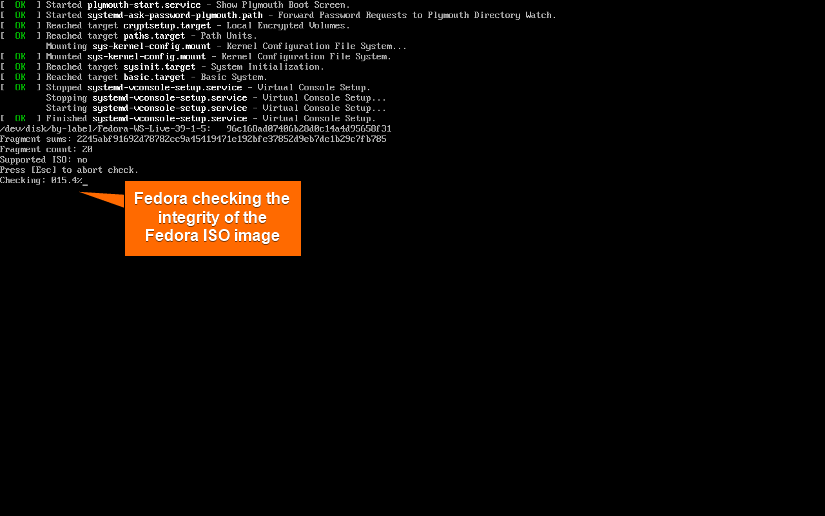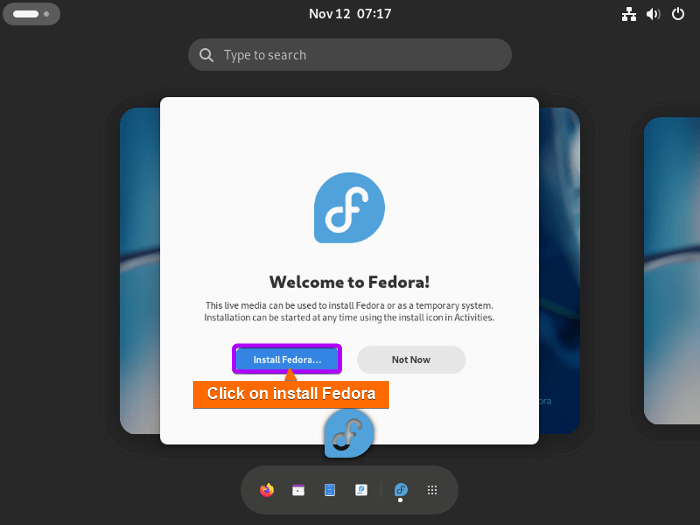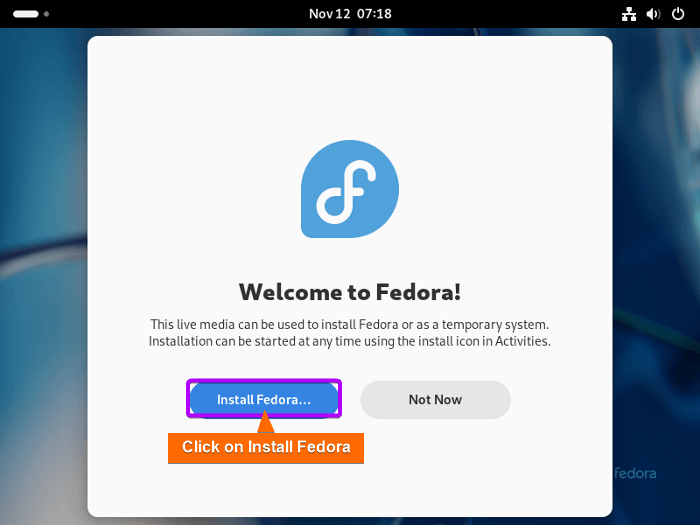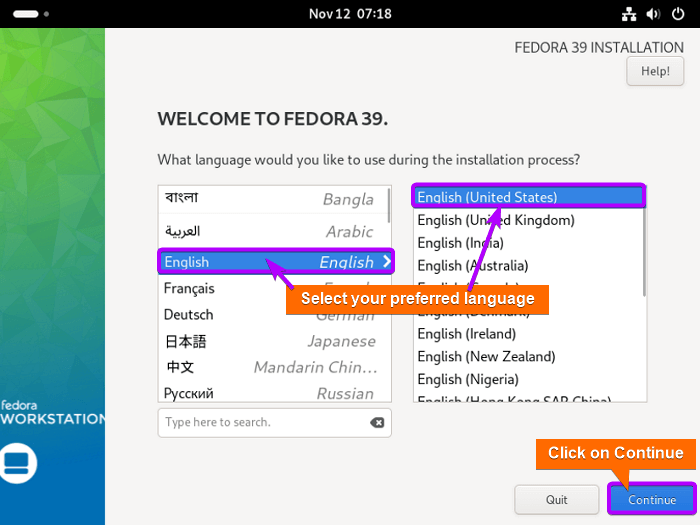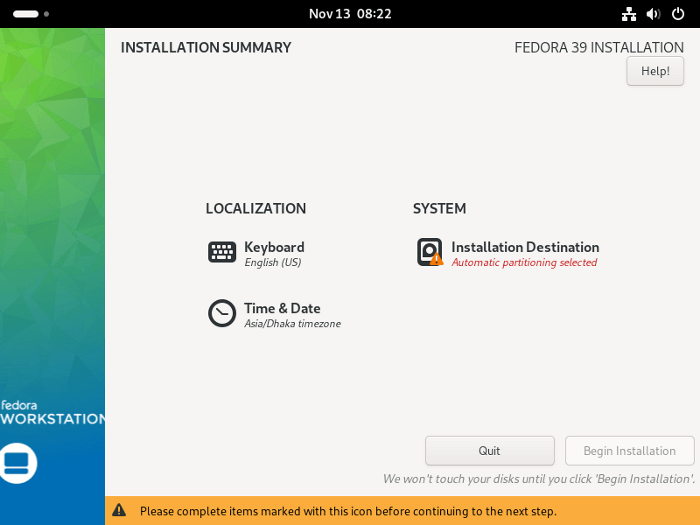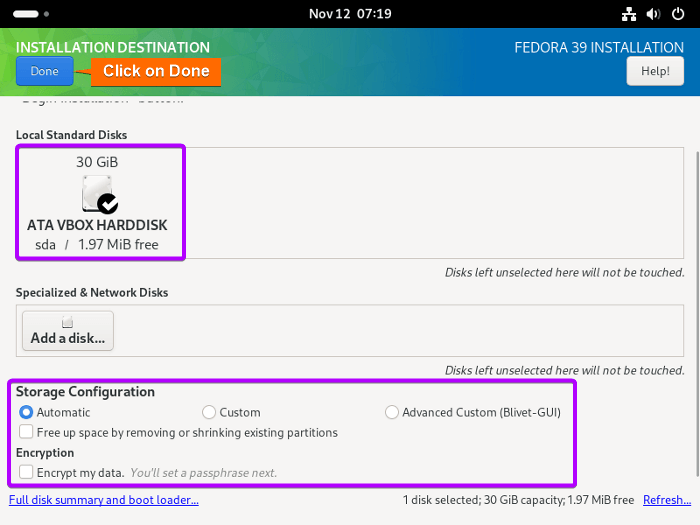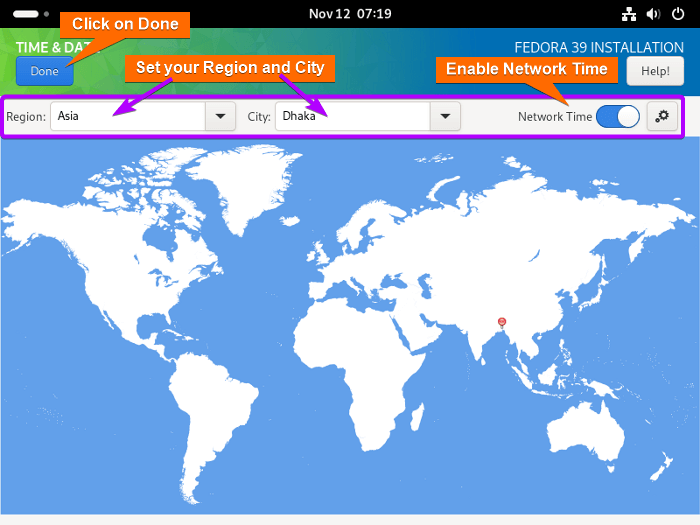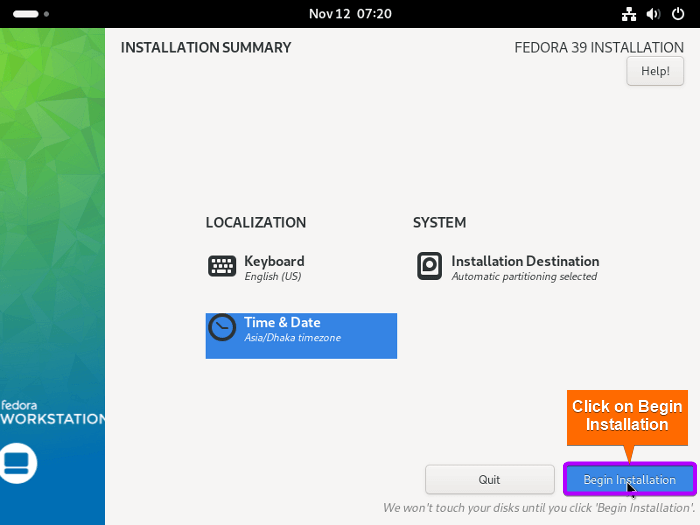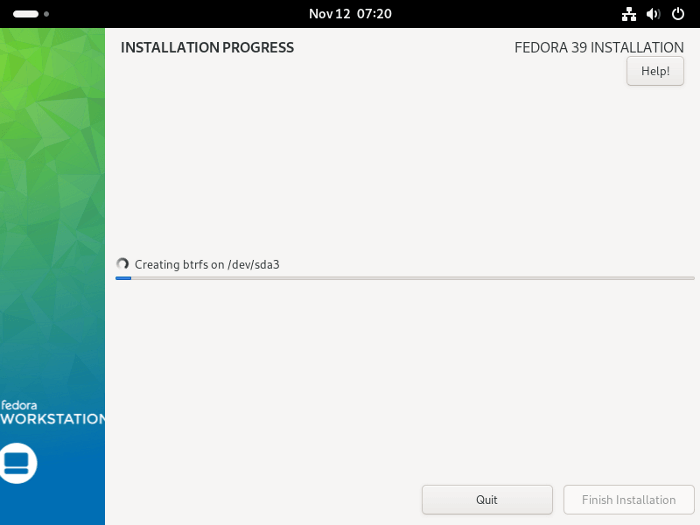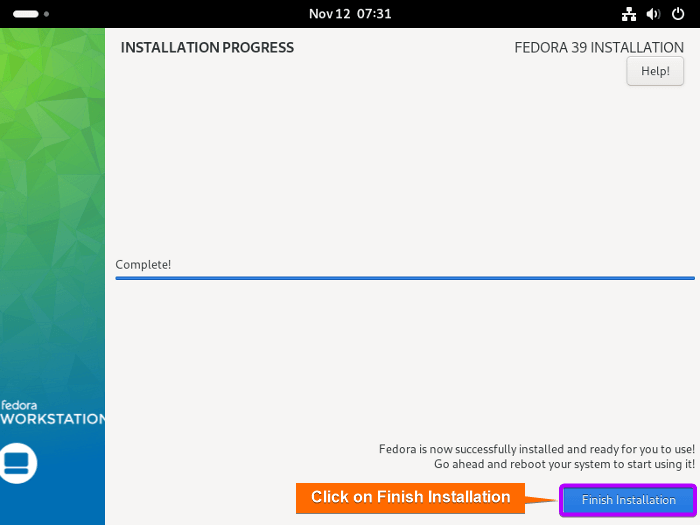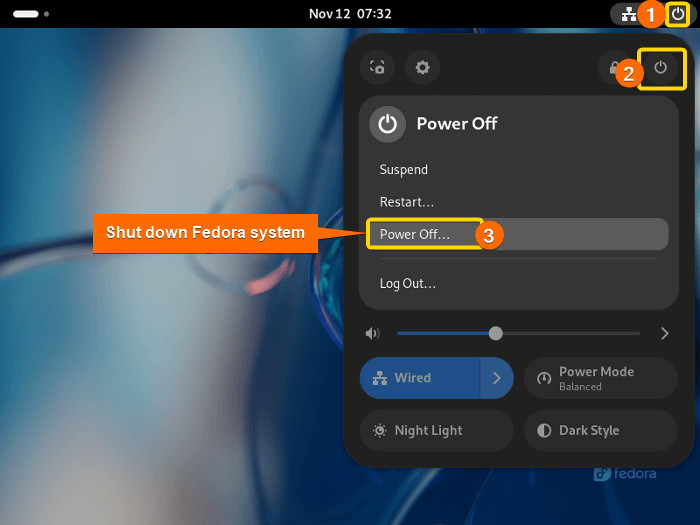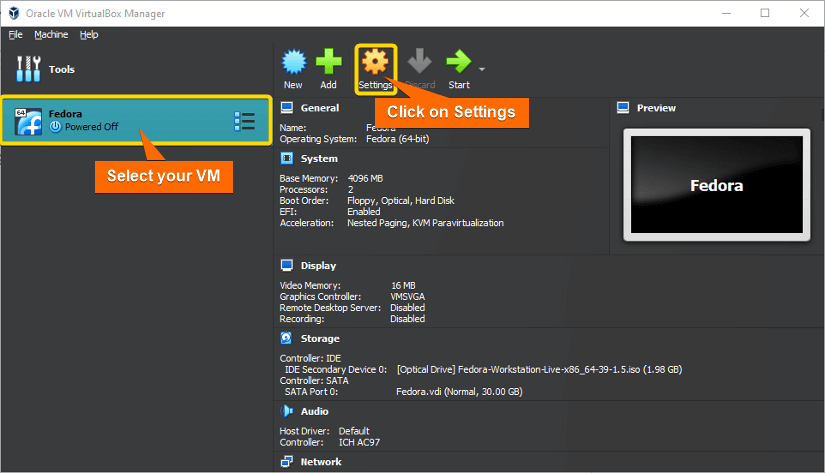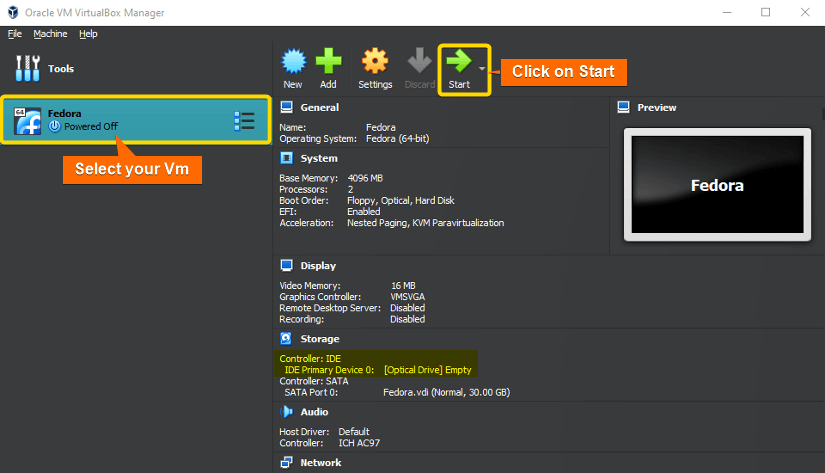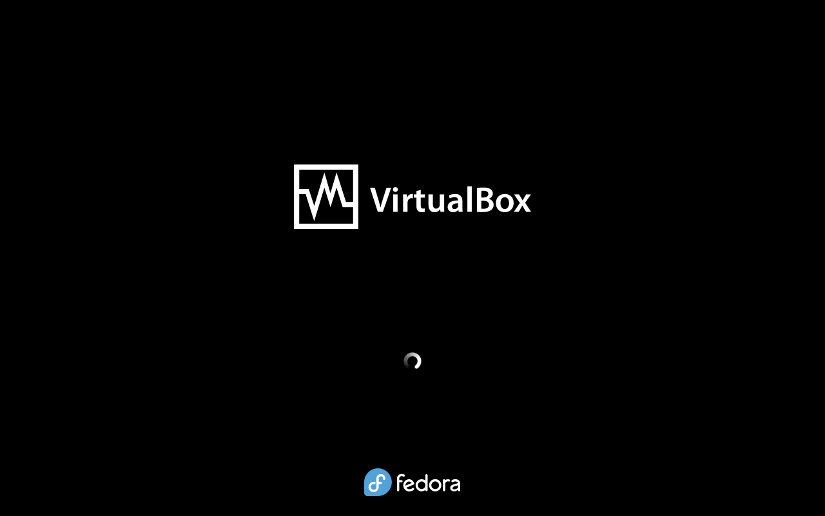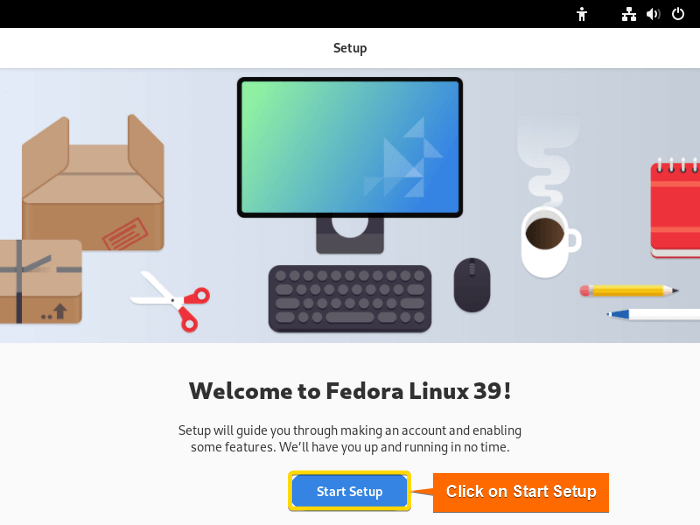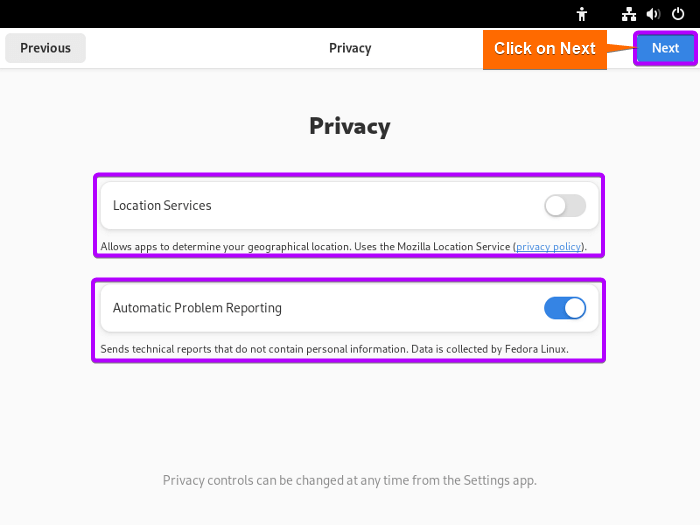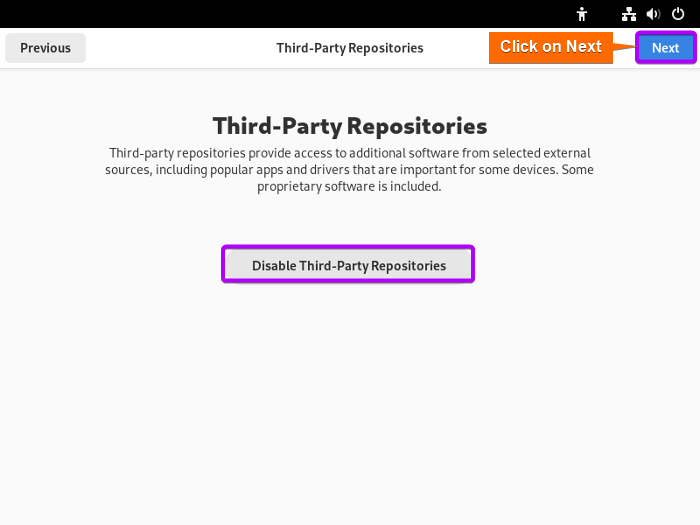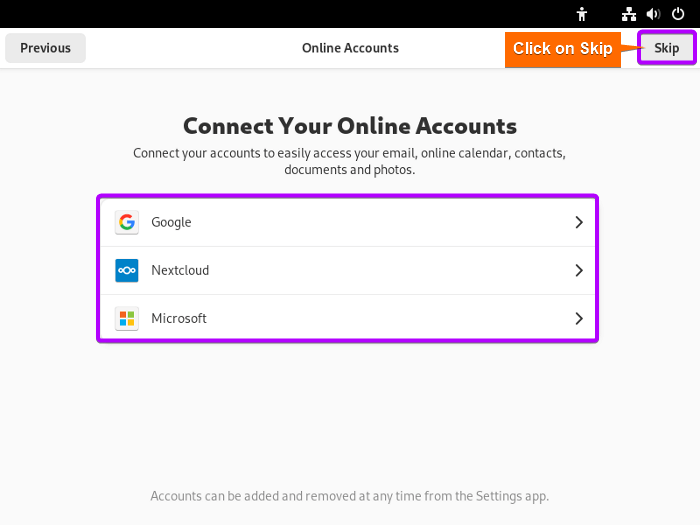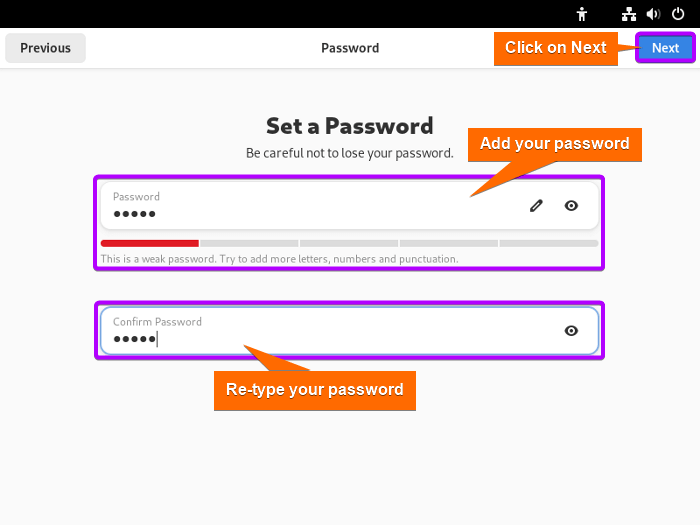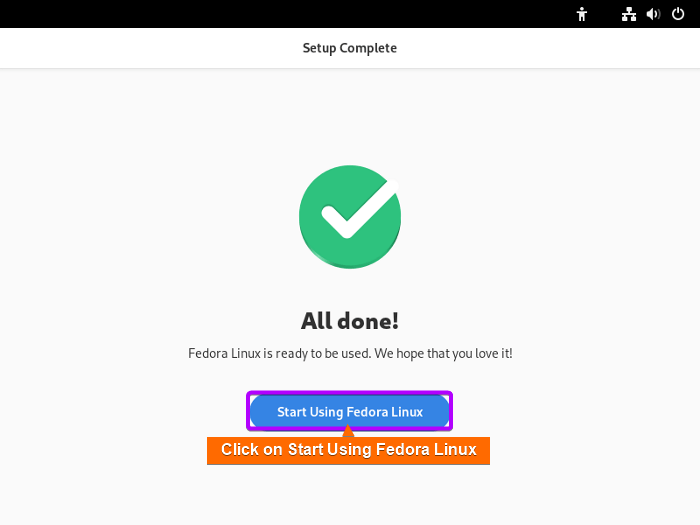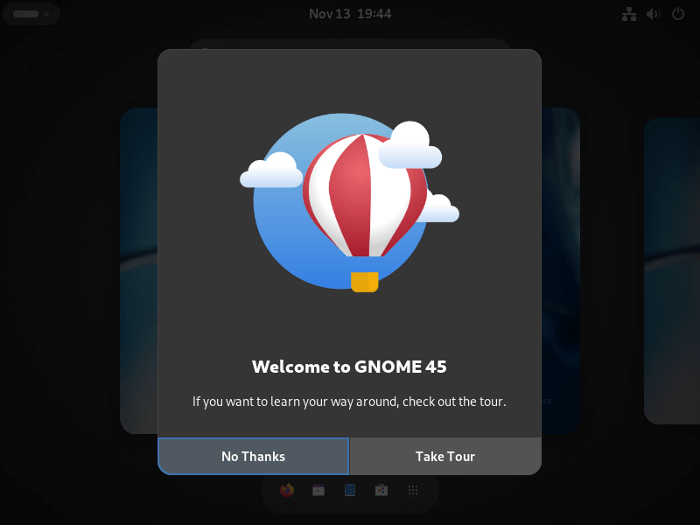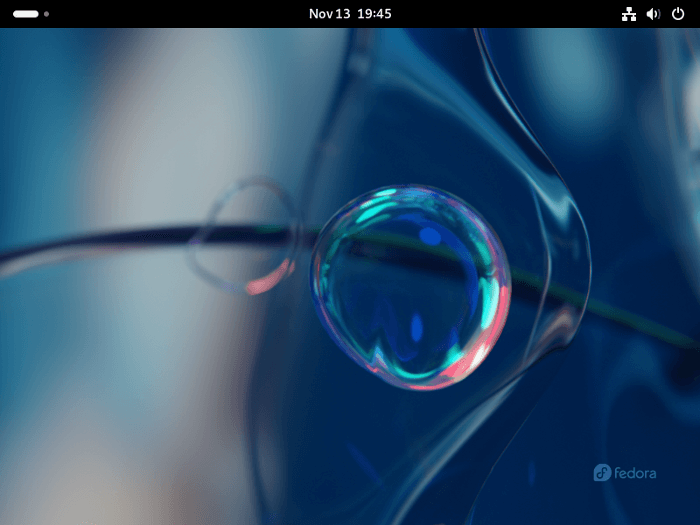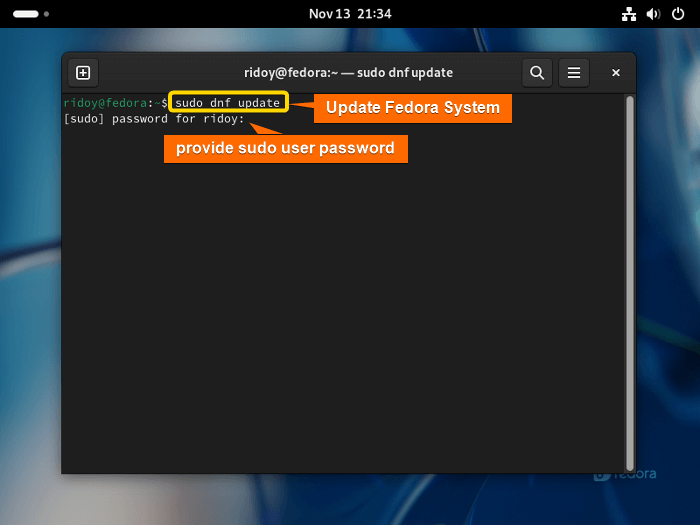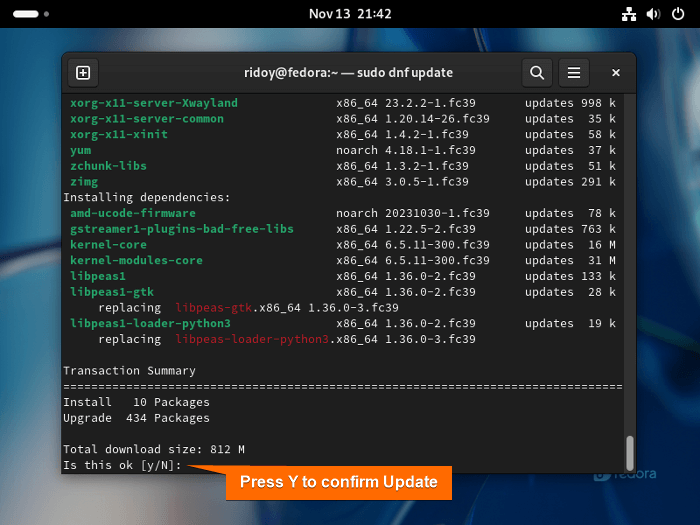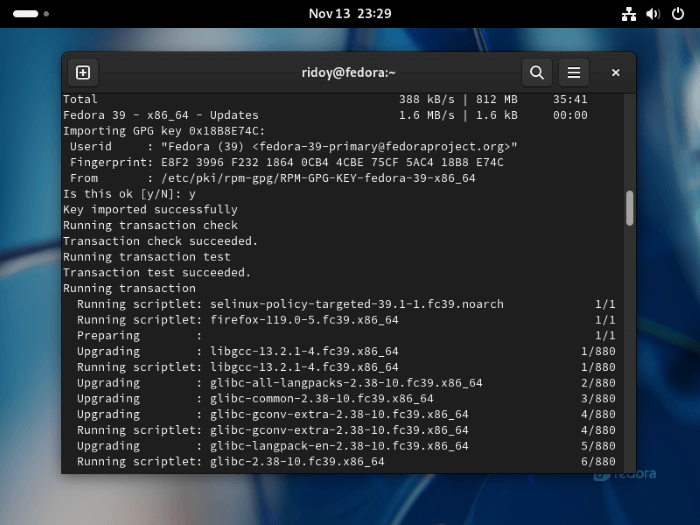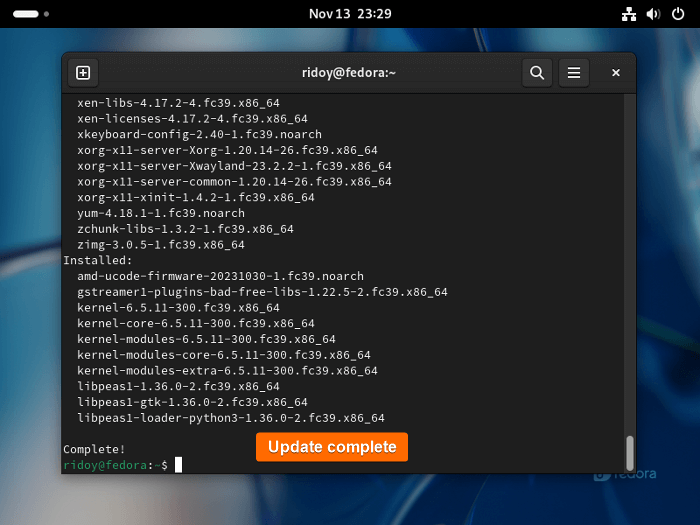VirtualBox is a widely used open-source virtualization software. It enables the creation and execution of various virtual machines in the host operating system which empower the user with the freedom to try different distributions. For instance, one such distribution is Fedora, an open-source Linux distribution developed by the Fedora Project. As a community-driven project, Fedora consistently incorporates the most up-to-date software, resources, and functionalities, making it an excellent choice for exploration within VirtualBox for both novice and experienced users. In this article, I will dive into how to install Fedora on VirtualBox.
Minimum Requirements to Install Fedora on VirtualBox
- Minimum 2 GB RAM (4 GB+ recommended).
- Minimum 15 GB free storage (20 GB+ recommended).
- 2GHz+ dual-core processor recommended.
- Active internet connection to download Fedora ISO image and update Fedora system.
9 Steps to Install Fedora on VirtualBox
To install Fedora on VirtualBox follow these step-by-step processes:
Step 1: Download and Install VirtualBox
Virtualbox is an open-source virtualization software developed by Oracle. It allows its users to create and manage virtual machines on their host computers. To install VirtualBox in your host system go through the following process:
- First download the latest version of the app from the Official VirtualBox website.
- Now install the Virtualbox app in your host system.
- Make sure you have CPU virtualization technology turned on from your BIOS/UEFI settings.
Step 2: Download Fedora ISO Image
Visit the official Fedora Project download page and download the live ISO file of the latest release.
Step 3: Create a Fedora Virtual Machine
To create the Fedora virtual machine (VM), follow these steps:
- First, open VirtualBox, and select Machine > New.
- Then, add a name for your virtual machine, set its installation location, and select Fedora live ISO image. Click on Next.
- Allocate RAM (Base Memory) and CPU cores for your VM. If you have a newer version of the processor, click on the Enable EFI checkbox. Then click on Next.
- Allocate virtual hard disk size for the VM. Click on Next.
- Revise the summary of the VM and click on Finish.
- The newly created VM will be added to the VirtualBox Manager.
Step 4: Start the Newly Created Virtual Machine
- Now, select your VM and click on Start.
- Then, the Fedora VM will boot up. Select “Test this media & start Fedora-Workstation-Live 39” and press ENTER. This will check the integrity of the Fedora live installer ISO file and start the installation process afterward.
Step 5: Setup Fedora
- After the Fedora live installer boots up, Click on Install Fedora.
- Click on Install Fedora again.
- Select your preferred language and click on Continue.
- Now, select Keyboard, select your preferred keyboard layout, and click on Done.
- Select Installation Destination. Make sure ATA VBOX HARDDISK is selected. Set Storage Configuration and Encryption according to your preference. Then click on Done.
- Now set your timezone. Make sure Network Time is enabled. Click on Done.
- After setting up localization and storage drive, you can now proceed with Fedora installation.
Note: During the setup process changing screen size should automatically adjust Fedora’s screen. In case it does not then you need to manually insert and install the VirtualBox guest additions Image after the Fedora installation is complete.
Step 6: Install Fedora
- Now, click on Begin installation.
- This process will take some time.
- After installation is complete, click on Finish Installation.
- You will be back to the Fedora live installer UI.
Step 7: Reboot the System
- First, shut down your system.
- Secondly, you must remove the Fedora Live install ISO image from your VM. To do that select your VM and click on Settings.
- Click on Storage > Fedora-Workstation-Live ISO image > disk icon > Remove Disk from Virtual Drive > OK to remove the ISO image.
- Now select your VM again. You can see the IDE Primary device is now empty. Click on Start.
- The Fedora virtual machine will now boot up.
Step 8: After Installation Setup
- After Fedora boots up, Click on Start Setup.
- Set Location Services and Automatic Problem Reporting according to your choice. Then click on Next.
- Click on Enable Third-Party Repositories and then click on Next.
- You can now Connect Your Online Account and move to the Next step. Or you can Skip this step and add your online accounts later.
- Add your Name and Username. Then click on Next.
- Add and retype your password. Click on Next.
- Click on Start Using Fedora Linux.
- If you want to take a tour of the Gnome desktop environment then click on Take Tour. Otherwise, click on No Thanks.
- Fedora is now ready to use.
Step 9: Update Fedora System
After installing an OS it is a good practice to update your system. You will need an active internet connection for the update process. To update your Fedora system:
- Run
sudo dnf updatecommand. Provide your sudo user password when prompted. - Press “y” to confirm your update. Now, DNF which is the latest and most upgraded package manager of the Red Hat-based operating system will automatically download all packages. This will take some time.
- Now press “y” to import the GPG key. This cryptographic key is used to digitally sign and verify software packages. This ensures that the packages you are installing are authentic and have not been tampered with. After checking your packages DNF will automatically update your system.
- After the update is complete you will get a confirmation message.
Conclusion
Installing Fedora opens up a world of endless possibilities present in the Linux/Unix ecosystem. I hope following this simple guide you will be able to integrate the rich features of Fedora Linux on your host system using VirtualBox.
People Also Ask
What is Fedora?
Fedora Linux is a popular open-source Linux distribution developed by the Fedora Project. It is known for its emphasis on cutting-edge technologies, rapid release cycles, and strong community support. Fedora Linux is an ideal choice for those seeking to stay up-to-date with the latest open-source software.
What are the features of Fedora?
The main features of using Fedora Linux are:
- Cutting-Edge software.
- Rapid updates.
- Strong security features.
- Stable Base.
- Open-source ecosystem.
- Strong community support.
- Workstation support.
- Server support.
- Container support.
Can I run Fedora on VirtualBox?
Yes, you can run Fedora on VirtualBox. You can also run Fedora as your host OS, as a dual boot, and on other virtualization software like Vmware.
Should I use Ubuntu or Fedora?
You can use any of those two Linux distros according to your needs. Among these two Ubuntu is recommended for beginners for its user-friendly graphical interface and ease of use. Ubuntu provides an LTS version which ensures a stable system with fewer system updates. In contrast, developers may find that Fedora is a more suitable choice due to its advanced platform, continuous development, and the ability to take advantage of new features with its frequent releases and security patches.
What is Fedora’s disadvantage?
The main disadvantages of using Fedora Linux are:
- It takes relatively more time to set up.
- It does not support deb files ( As it is a Red Hat-based distribution).
- Very limited compatibility with older hardware.
- Limited support for games.
- Need to add the third-party repository for installing nonfree software.
- No long-time support release (need frequent updates).
Is Fedora completely free?
Yes, Fedora is completely free and open-source. It follows the principles of free software, allowing users to download, use, modify, and distribute it without any cost. As a result of its open-source nature, Fedora not only provides free access to its source code but also allows users to review and modify it.
Is Fedora beginner-friendly?
Yes, Fedora is one of the more beginner-friendly operating systems. There are obviously more beginner-friendly OS like Linux Mint, Ubuntu, Zorin OS, Elementary OS, etc but one can start using Fedora just after installing it without any major tweaks. Also, the Fedora community provides excellent documentation and support, making it accessible to any user who is willing to explore and learn.
Related Articles
- How to Install Ubuntu on VirtualBox [A Complete Guide]
- How to Install Arch Linux on VirtualBox [3 Methods]
- How to Install Debian on VirtualBox [Step-by-Step]
- How to Install VirtualBox Guest Additions on Debian
- How to Install Kali Linux on VirtualBox [Easiest Guide]
- How to Install CentOS 7 on VirtualBox [8 Easy Steps]
- How to Install VirtualBox Guest Additions on CentOS
<< Go Back to Virtual Machine Installation Guide | Linux OS Installation Guide | Learn Linux Basics
FUNDAMENTALS A Complete Guide for Beginners

